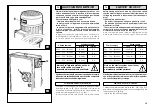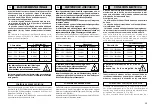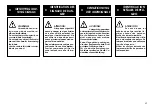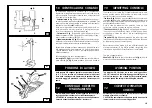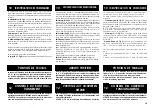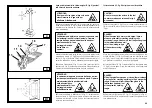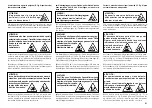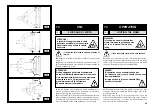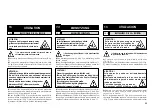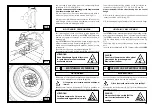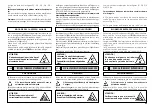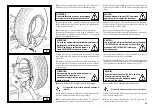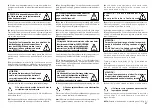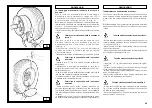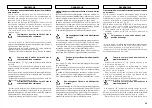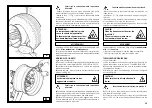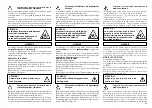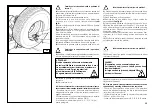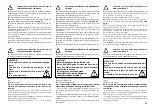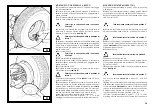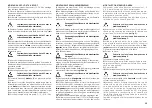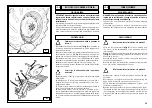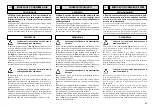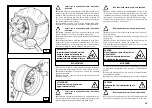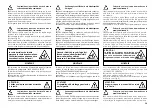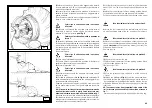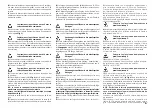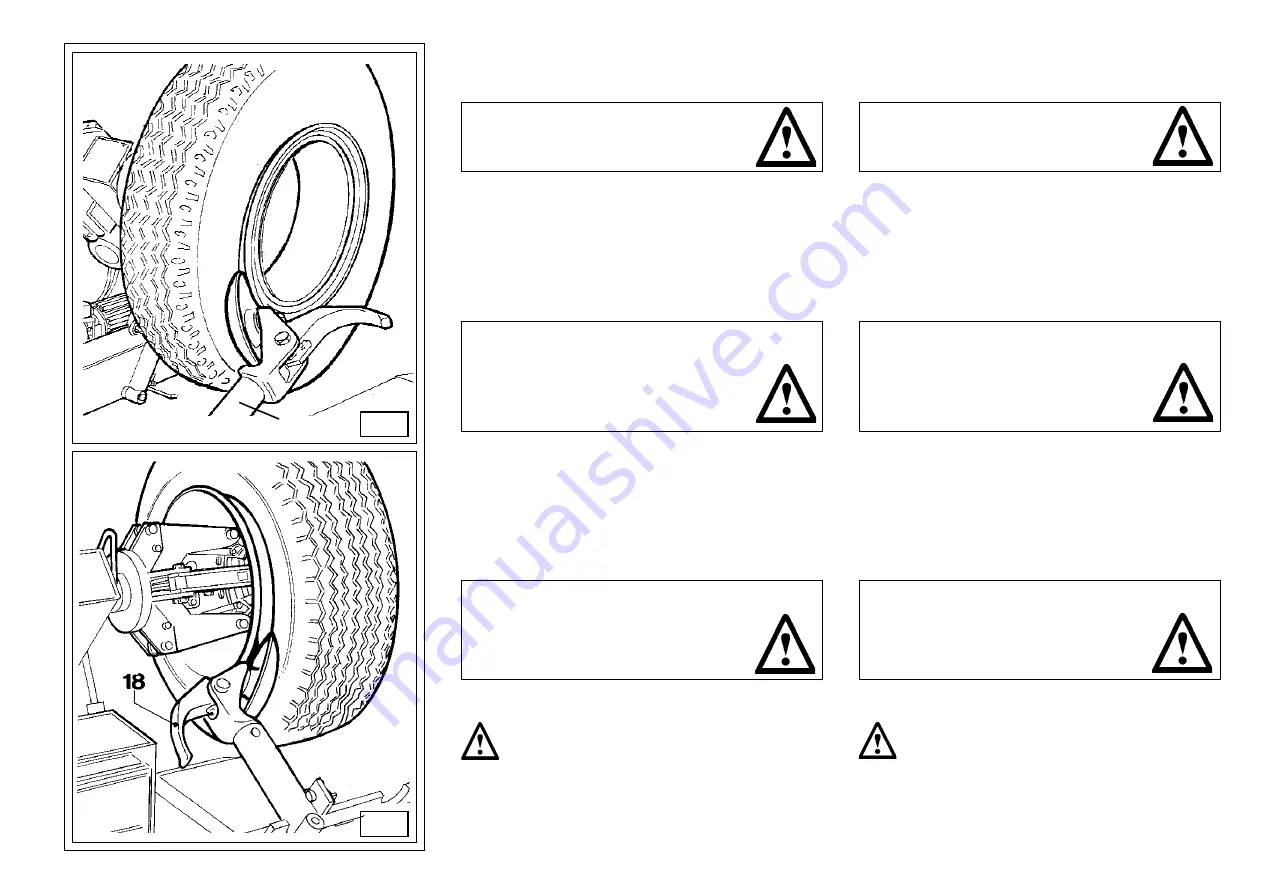
2
5)
Fare ruotare la ruota e contemporaneamente fare avanzare
il disco stallonatore a brevi scatti seguendo il più possibile con
il disco il profilo del cerchio.
6)
Avanzare fino al completo distacco del primo tallone.
Per agevolare l'operazione, con la ruota in movimento, lubri-
ficare il tallone e la balconata del cerchione con l'apposito
grasso o con soluzione saponata.
ATTENZIONE!
Il disco stallonatore non deve fare pressione
sul cerchio ma sul tallone del pneumatico.
DANGER!
The bead breaker disk must NOT be pressed
against the rim but against the tyre bead.
5)
Rotate the wheel and at the same time, advance the bead-
breaker plate with small forward movements following the
profile of the rim, with the plate.
6)
Continue until the first bead is fully detached.
To facilitate this operation, lubricate the bead and the edge of
the rim with tyre lubricant whilst the wheel is rotated.
ATTENZIONE!
Per evitare qualsiasi rischio effettuare le operazioni di
lubrificazione dei talloni ruotando in senso
ORARIO se si opera sul fianco esterno, o in
senso ANTIORARIO se su quello interno.
Ricordare inoltre che l'avanzamento del disco deve essere
tanto più lento quanto maggiore é l'aderenza del pneumatico
al cerchio.
7)
Allontanare il braccio porta utensili (14, fig.F) dal bordo del
cerchio. Sganciare il cricchetto, sollevare il braccio in posizione
di fuori lavoro, traslarlo e riagganciarlo nella seconda posizione
di lavoro (fig.G).
ATTENZIONE!
Non tenere le mani sull'utensile quando lo si
riporta in posizione di lavoro:
potrebbero schiacciarsi tra l'utensile
stesso e la ruota.
8)
Ruotare l'utensile di 180° togliendo il pomolo di bloccaggio.
Ripetere le operazioni precedentemente descritte ai punti 5 e
6 fino al completo distacco del secondo tallone.
N.B.:
Durante la stallonatura l'utensile a becco (18, fig.G) può
essere abbassato in modo da non costituire ostacolo.
9) Portarsi con la colonnetta mobile in posizione di
lavoro D.
CAUTION!
To avoid all risk, lubricate the beads turning the wheel
CLOCKWISE if you are working on the outside
plane and ANTICLOCKWISE if working on
the inside plane.
Remember that the stronger the tyre’s adherence to the rim,
the slower must be the disk’s penetration.
7)
Bring the tool carrier arm (14, Fig. F) back from the edge of the
rim. Release the hook, raise the arm to its non-working position,
shift it and rehook it in its second work position (Fig. G).
DANGER!
Do not hold your hands on the tool when you
bring it back to its work position.
Your hand(s) could be trapped between
the tool and the wheel.
8)
Turn the tool of 180° and remove the locking knob.
Repeat the operation previously described until the second
bead is completely broken.
N.B.:
During the bead breaking, the claw (18, fig.G) can be
lowered so that it is out of the way.
9) Take the mobile control unit to work position D.
F
4)
Agendo sul manipolatore posizionare la ruota in modo che il
profilo esterno del cerchio sfiori il disco stallonatore (fig.F).
4)
Operating from the mobile control centre, manoeuvre the
wheel until the outside of the rim skims the bead-breaker disk
(fig. F).
G
1

